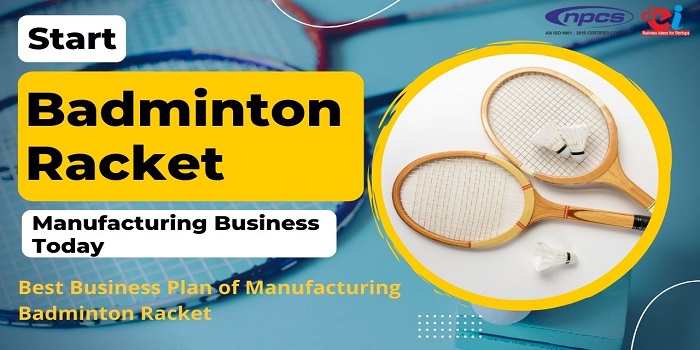Introduction:
A badminton racket is an equipment used in playing badminton. It is made up of thin strips of wood or graphite which are strung together tightly and evenly. At one end of these strings is a metal hoop called a shuttlecock which holds an object called shuttle consisting of cork, rubber threads and feathers that hits against another shuttle when two players strike their rackets. The goal of badminton is to hit your opponent’s shuttlecock with your own.
Visit this Page for More Information: Looking for Most Demandable Business Ideas for Startups
Uses of Badminton Racket:
A racket is a sport that consists of a handled frame and an open hoop across which a network of strings or catgut is stretched taut. It’s used to hit a shuttlecock in sports including badminton, tennis, and squash. Commercial rackets frequently use composite materials like carbon fiber or aluminum alloy. Racquets are strung with string to make them playable. The word racquet is derived from the French word rachasser, which means “to tear apart.”
Read Similar Articles: Business Plan
The word originated from the French game jeu de paume, which referred to both a wooden paddle and a wool-stuffed leather ball (the predecessor of modern-day tennis). In everyday English, racket refers to a badminton racquet without qualifier; nevertheless, racket also refers to a tennis racquet in many non-English speaking countries. Although there is some dialectal variation, racket in British English always refers to a tennis racket.
Manufacturing Process:
The first type of manufacturing procedure is hot pressing, while the second is cold pressing. To make a final product, a metal mould is heated until it reaches 1,300 degrees Celsius, then resin is injected into it. Cold pressing is putting resin into a mould at room temperature, then heating the finished product to 1,300 degrees Celsius at high temperatures.
Business Plan: Badminton Rackets Manufacturing Business
Carbon fiber is first placed into a furnace that reaches 2,600 degrees Fahrenheit, then removed once it has been heated. After that, the material is crushed and chilled before being cut into thin sheets with a laser cutter. These thin sheets are wrapped around a metal former to form a frame, then baked for 10 minutes at 480 degrees.
Excess material is sliced away with another laser once it has cooled. After that, the frames are baked for another 30 minutes at 1,800 degrees to harden them. After that, the frames are sandblasted many times before being paint or coated with resin. They’re then inspected one more time before being packaged for shipment.
Download PDF: Badminton Racket Manufacturing Business Plan | Good Time Become a Badminton Racket Manufacturer
Benefits of starting Badminton Rackets Manufacturing Business:
The profit margin of the badminton racket business is higher than that of any other business, it generates a lot of income and has various revenue streams, and it has a lot of options to sell online through Amazon, eBay, and Flipkart, among other places. If you want to create a business, a badminton racket manufacturing company will be a great place to start.
Related Feasibility Study Reports: Sports Equipment, Fitness Goods, Sports Goods, Smart Sports Equipment, Game and Protective Equipment
Badminton is one of the most popular sports for both children and adults. So, if you want to start a new business or are seeking for a small-scale business concept, starting a badminton racket manufacturing company could be an excellent alternative. Starting a badminton racket manufacturing business does not require a large sum of money.
Global Market Outlook:
The global badminton equipment market is predicted to reach by 2027, with a CAGR of 2.5 percent during the forecast period. Nonmaterial is a significant component in the construction of badminton rackets in today’s market. The nonmaterial is luring buyers because of its light weight.
Carbon fiber is being used to replace old metal, steel, and wood in a variety of sporting equipment, including rackets. The proliferation of badminton leagues at the regional, national, and district levels has created huge opportunities for key market players. The worldwide badminton equipment market is predicted to grow at a stable CAGR over the forecast period. One of the most crucial factors fueling the market’s rise is growth.
Industry Major Market Players
- Yonex
- VICTOR
- RSL
- Lining
- GOSEN
- KAWASAKI
- Carlton Sports
- Wilson Sporting Goods
- Babolat
- Apacs Sports
- COSCO India Ltd.
- Silver Sports India
See More Links:
- Start a Business in Asia
- Start a Business in Potential Countries for Doing Business
- Best Industry for Doing Business
- Business Ideas with Low, Medium & High Investment
- Looking for Most Demandable Business Ideas for Startups
- Startup Consulting Services
- Start a Business in Africa
- Start a Business in India
- Start a Business in Middle East
- Related Videos
- Related Books
- Related Projects
- Related Market Research Reports

